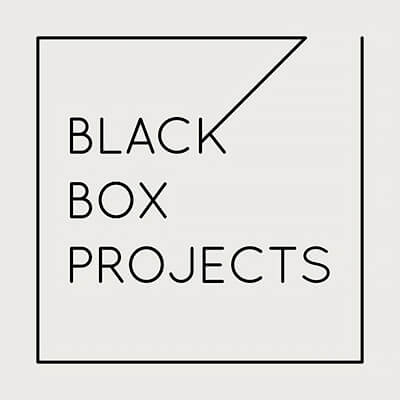Bringing together the work of nine international contemporary artists who apply historic photographic techniques to create innovative and unique artworks, Fundamentals is presented by Black Box Projects from 8th to 19th October 2019 at 68 Duke Street, Mayfair, London, W1K 6JY. The artists, many of whom work with handmade cameras, modified cameras, or no camera at all, are unified by their dedication to exploring the processes of the past and discovering novel approaches to factoring them into their practice, while redefining the very root of what photography can be.
The exhibition will include such increasingly rare techniques as photograms, ambrotypes, cyanotypes, tin-types, wet-plate collodion prints and silver gelatin prints. In presenting these methods Fundamentals will provide an opportunity to examine why these rudimentary techniques have benefitted from a resurgence in popularity in today's age of digital technology and social media.
Included among the 40 works displayed in Fundamentals are photographic images created often without cameras by melting ice crystals, the path of the sun, and dust and dirt from an almost 500 day journey affecting and distorting the film carried from the North Pole to Antartica, while traditional techniques dating back to the very dawn of the photographic medium lend contemporary subject matter an otherworldly appearance.
All of the pieces in Fundamentals are for sale, with prices ranging from £1,000 - £30,000. Accompanying the exhibition will be a 48-page newsprint publication with an introduction by Martin Barnes, Senior Curator of Photographs, V&A, published by Ethos.
www.ethos.ink
Ben Cauchi (New Zealand, lives in Berlin) uses the very earliest photographic techniques; the wet-collodion photographic process, producing ambrotypes (an obscure mid 19 th Century wet-plate photographic proces s) and tintypes (one-off positives on glass or metal). These are processes that date back to the dawn of photography. Cauchi has said that 'the mechanical side of photography has never really appealed to me anywhere near as much as the alchemical.'
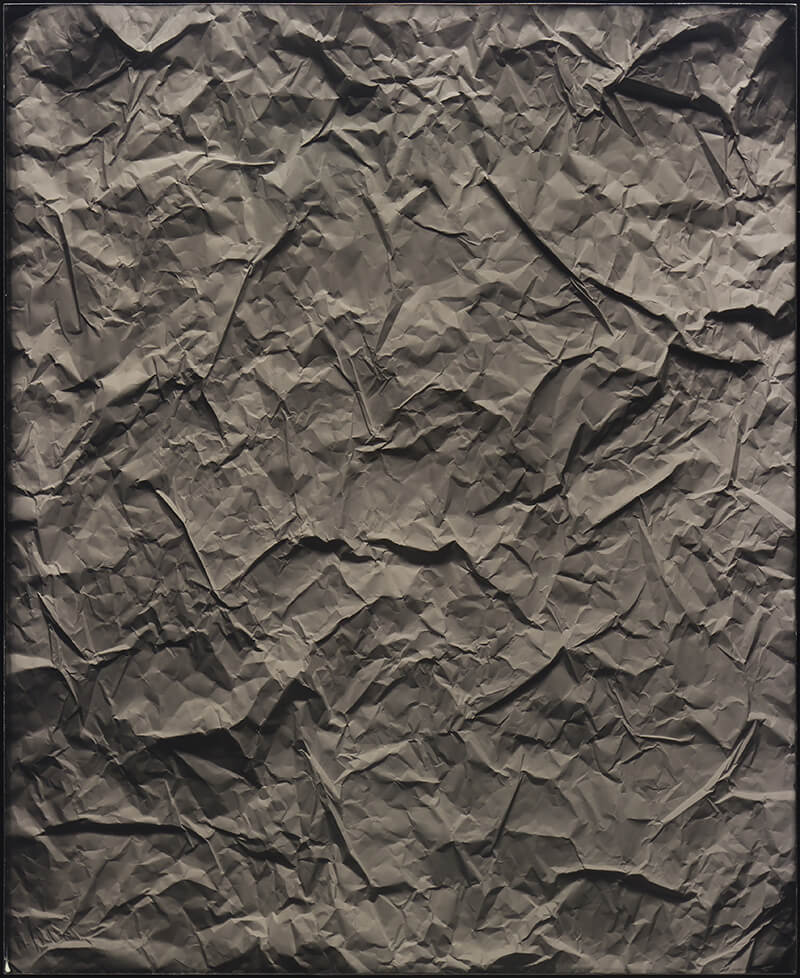
© Ben Cauchi Untitled (12), 2017 ambrotype, unique Courtesy Ingleby Gallery and Black Box Projects
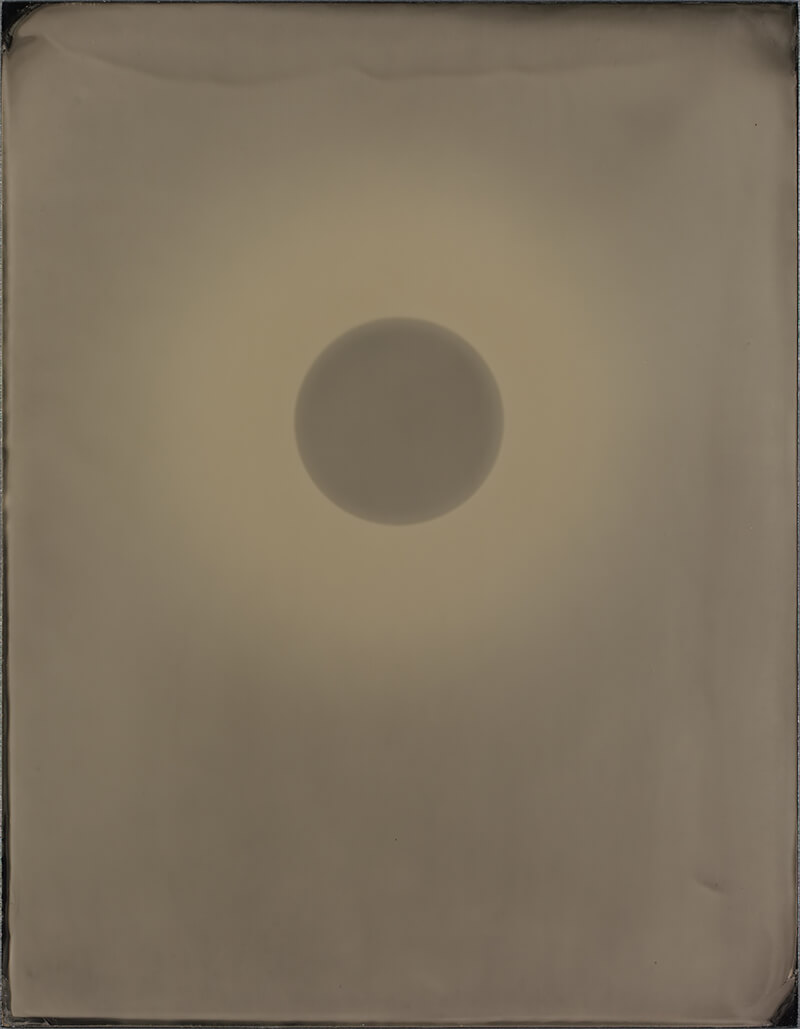
© Ben Cauchi Untitled (24), 2018 burnished photogram Courtesy Ingleby Gallery and Black Box Projects
(USA, lives in New York) produces collages made up of silver gelatin prints created without the use of a camera. She painstakingly hand cuts and hand paints her compositions using historic printing techniques and vintage equipment to pay homage to the physical limitations and opportunities found in analogue methods. Dugan views this process as a meditative one, 'The darkroom is, for me, a refuge from the infiltration of technology and the fastness it represents. One goal with these works is to retain visual evidence of the hand used in making them.
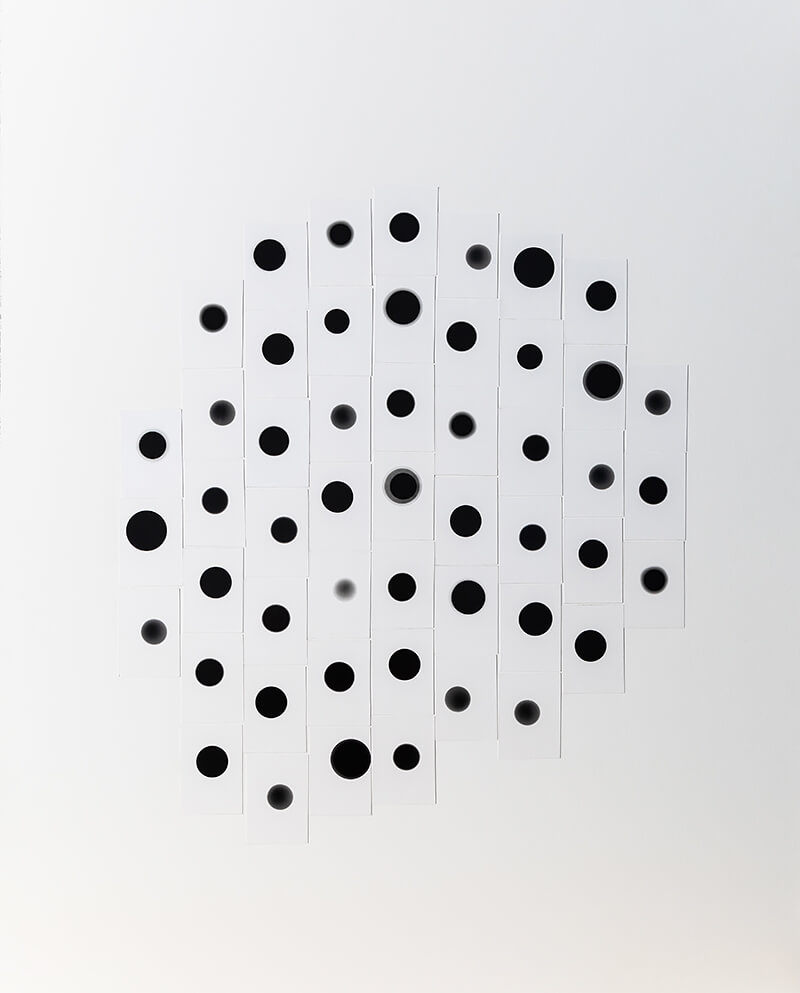
Joanne Dugan Enlarger Lens Meditation #1, 2019 Gelatin Silver Photogram Print Collage Courtesy Black Box Projects
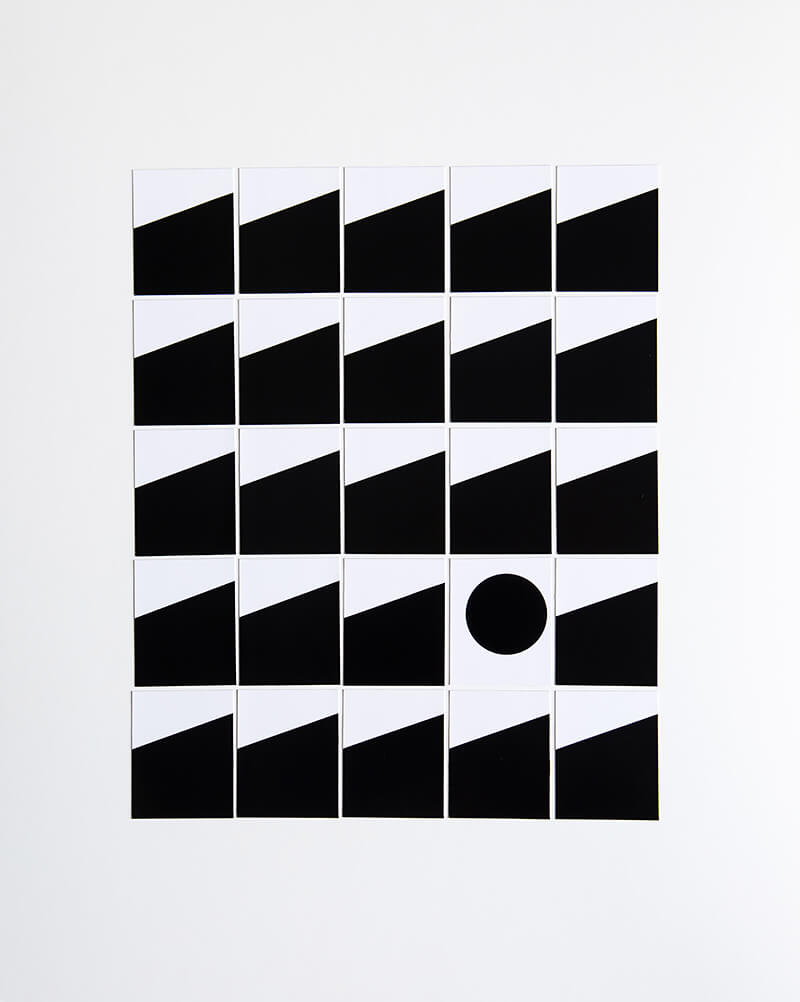
Joanne Dugan Multiples 25, Grid #19, New York City, 2018 From the series Multiples, Series 2 Gelatin Silver Photogram Print Collage Courtesy Black Box Projects
(Denmark, lives in Argentina) creates work that addresses the materiality and transience of the photograph as an object. Much of Jeppesen's work is the result of a solitary 487-day journey from the North Pole to Antarctica in 2007. The journey has left visible traces and blemishes on the photographs as he carried his film and camera equipment with him on the road, where the negatives picked up grit and dust along the way. Jeppesen celebrates these imperfect elements rather than tries to hide them. Coincidence, damage and imperfection are essential elements in his work. At a time when the image has become infinitely perfectible and reproducible, Jeppesen experiments with the photograph as a unique object that is subject to the forces of change and decay.
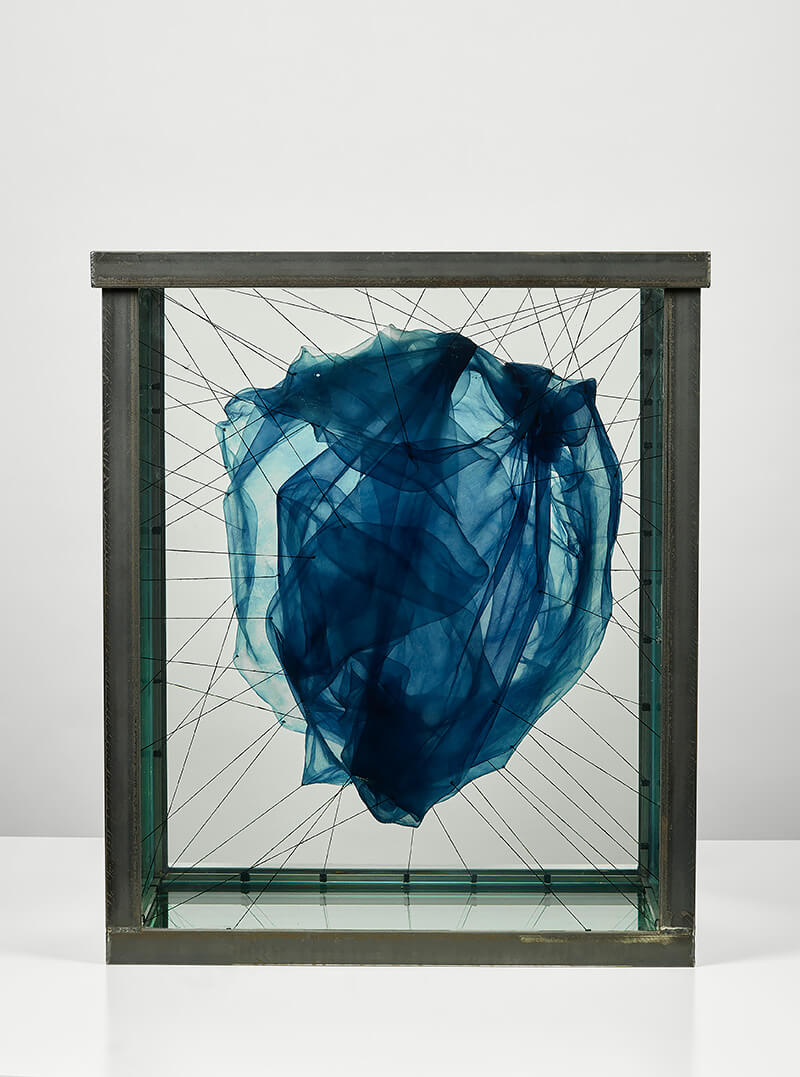
© Adam Jeppesen, Work no. 133 (T), 2019 Mixed media Courtesy Black Box Projects
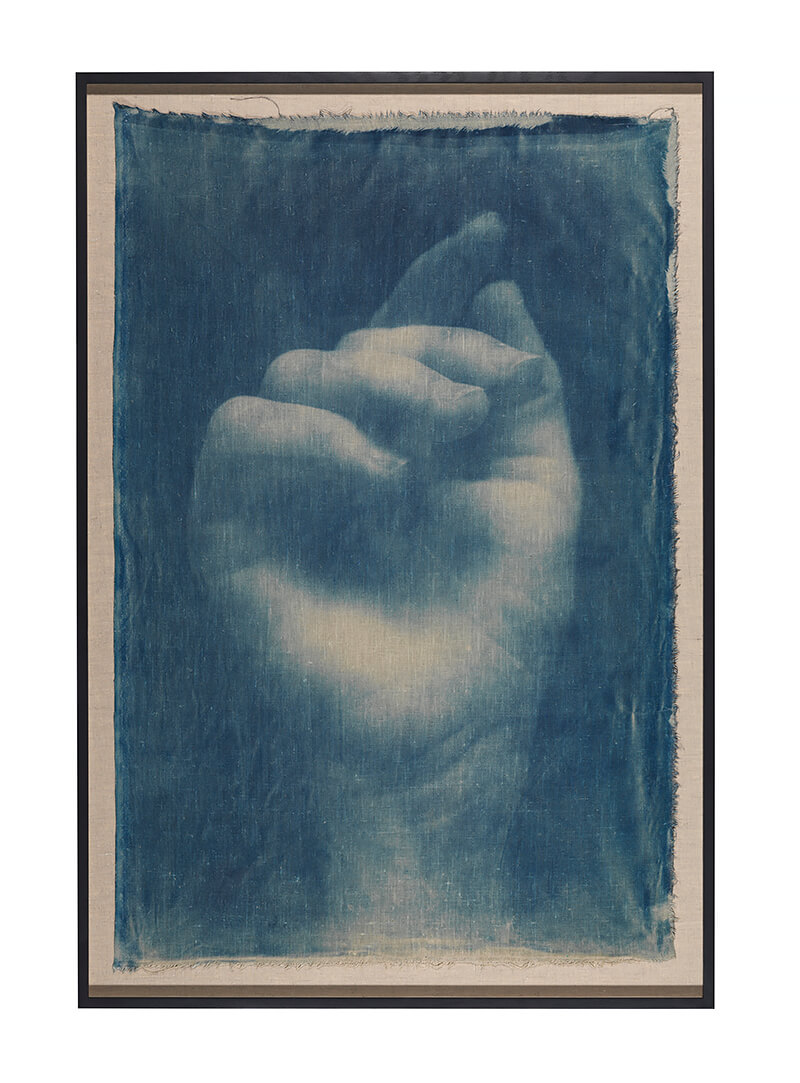
© Adam Jeppesen, Work no. 128, 2018 Cyanotype on linen Courtesy Black Box Projects
(Germany, lives in London) has, for the first time in his career, turned to the historic technique of cyanotype. C-Blue was born out of Lieber's fascination with the Arctic and his shock at the desperately fast and potentially irreversible changes that have been caused to the environment. From lithium mines in the Atacama Desert to the world's largest lignite open pit mine in Germany, Lieber has photographed various landscapes forever altered by resource extraction. It is the delicate fragility of the ice cap, however, that he keeps revisiting.
To obtain images that chart the ice metamorphosis rather than merely document the result, Lieber returned to the 19th Century cameraless technique that utilises daylight to expose paper coated with a light-sensitive solution. Melting ice crystals reflects the light and leaves traces on the canvas. As in nature meticulous planning conflicts with the laws of physics resulting in images as unique as the combined impact of all the elements that have come together to create them.
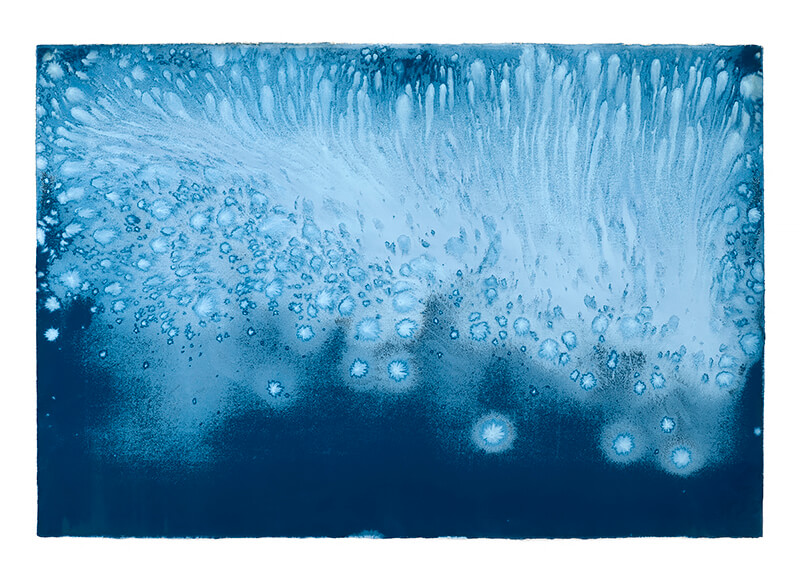
© Timo Lieber Cyanotype 2 Courtesy Black Box Projects
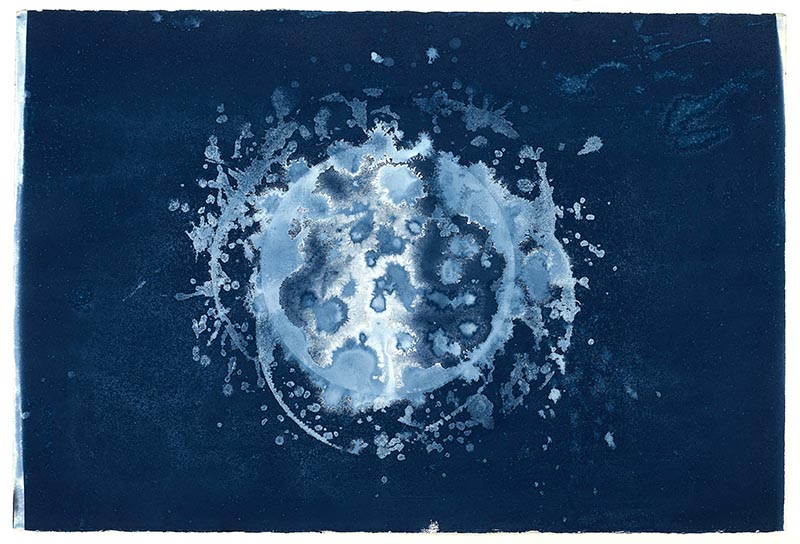
© Timo Lieber Cyanotype 11 Courtesy Black Box Projects
(Scotland, lives in London) is inspired by the Pictorial movement popularised in the late 19 th and early 20 th centuries. For a Pictorialist, a photograph, like a painting, drawing or engraving, is a way of projecting an emotional intent into the viewer's realm of imagination. His works often utilise chiaroscuro elements of light and shade creating a melancholic, expressive mood. Macleod shoots on a large-format camera with a consistently systematic and meticulous approach so that he can absorb and slow the pace of the images. He creates a stillness, a sense of extended present time through narrow depth of field and camera movements, there is an obtuse visibility of detail - the aim is to question what lies between the elements beyond and within photographs, by decelerating the process of photography, with a distilled focus on the basic principles of making.
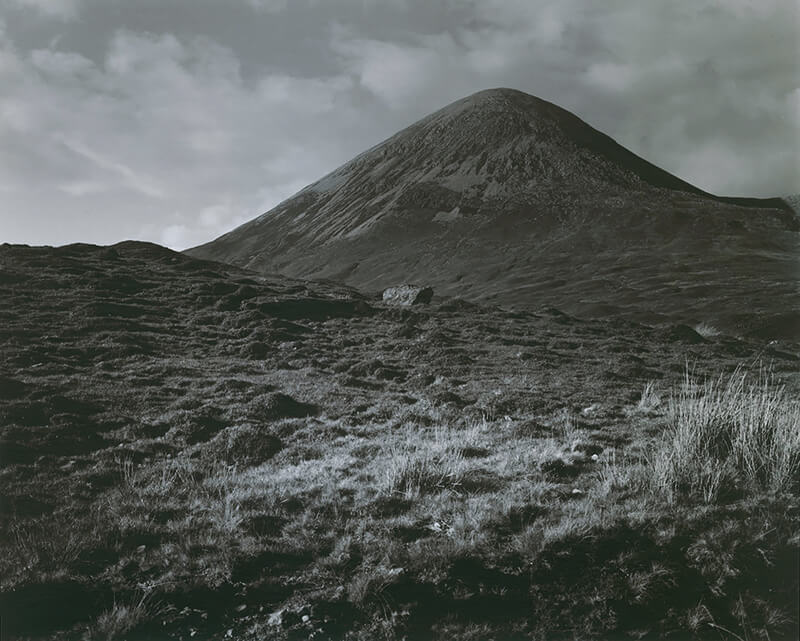
© Steve Macleod Indigo 1, 2019 Selenium-toned silver gelatin print Courtesy Black Box Projects
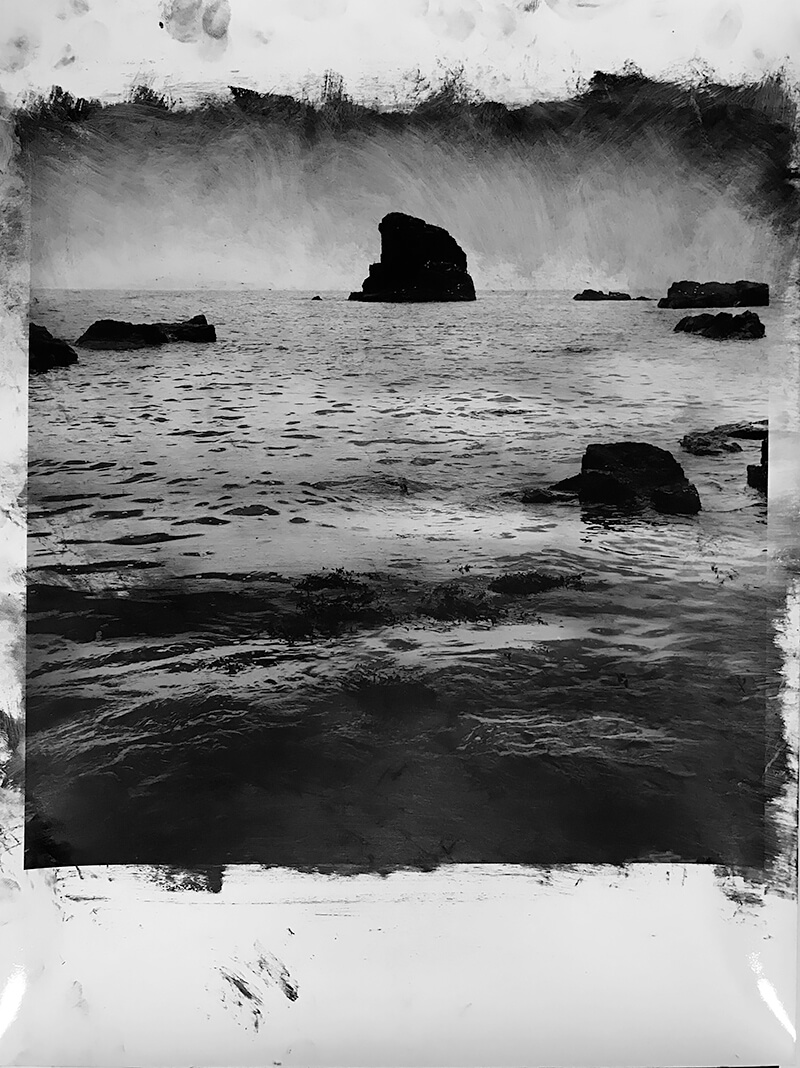
© Steve Macleod Off Far Rock, 1992-2005 Silver gelatin print, with Winsor & Newton black oil stick applied by hand Courtesy Black Box Projects
(USA, lives in California) uses hand-built cameras with vintage photographic paper as negatives.
His artistic process is firmly rooted in the history of photography while simultaneously pushing the medium in new
directions and recalls the work of photography pioneer, Henry Fox Talbot, combined with the slash and burn
paintings of Lucio Fontana. He photographs the sun, making minutes, hours, or even many day-long exposures,
that burn the sun’s path onto the paper and capture its movements against its land or sea background. Long
exposures throughout a day, or over multiple days, materialise as marks and burns made directly by the sun's
light as the paper is exposed. The subject of the photograph (the sun) disrupts the idea that a photograph is
simply a representation of reality. Instead it becomes a physical embodiment of the Earth's movement and the
passage of time.
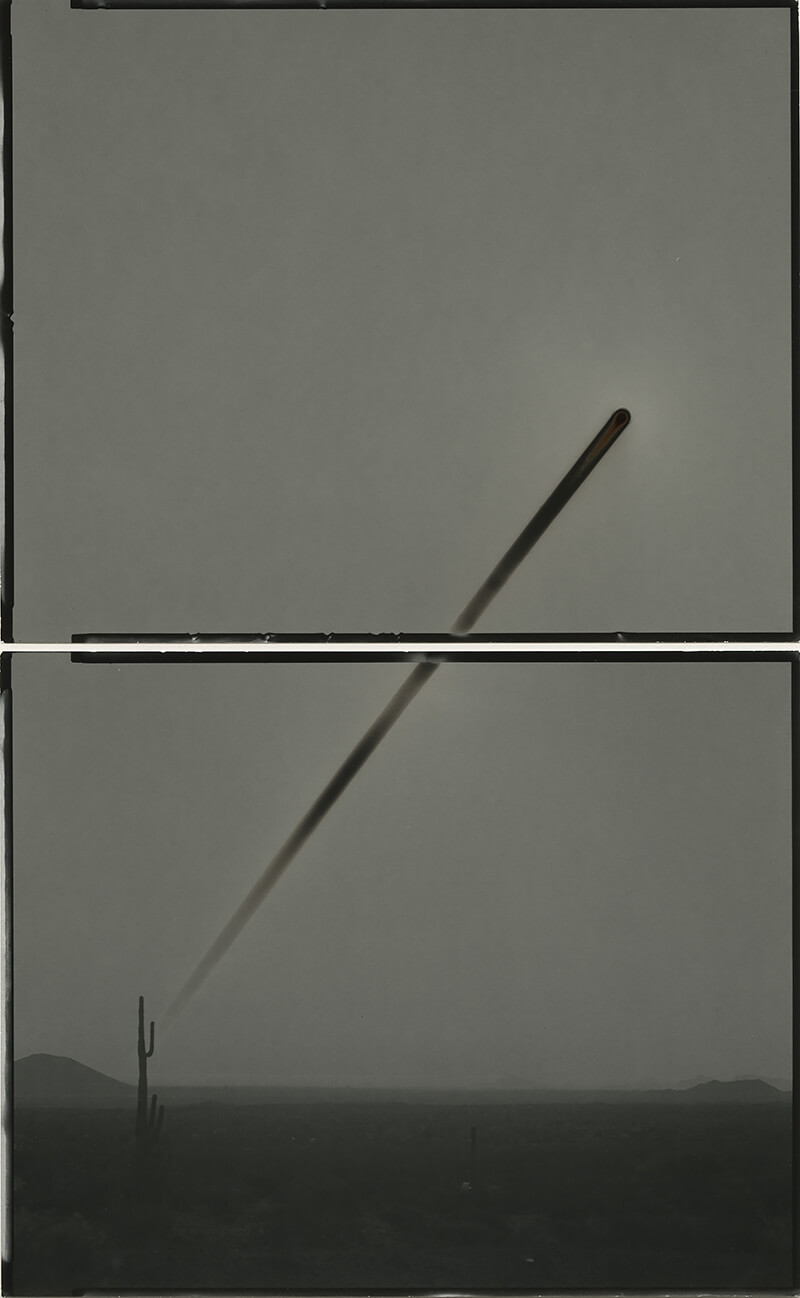
© Chris McCaw Sunburned GSP#1016 (Mojave/expanding), 2019 Unique gelatin silver paper negative Courtesy Black Box Projects
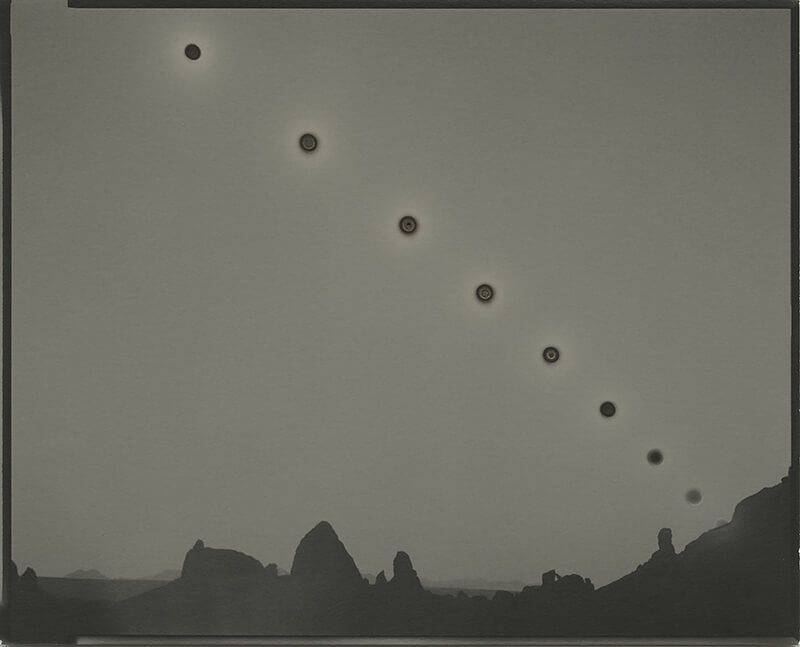
© Chris McCaw Sunburned GSP#1031 (Mojave/expanding), 2019 Unique gelatin silver paper negative Courtesy Black Box Projects
( USA , lives in New York) uses a contemporary application of one of the best-known avant-garde photographic processes - the photogram - which was first mastered by Man Ray and Maholy-Nagy at the beginning of the 20 th Century. Each unique colour image is created without a camera by placing objects directly onto photographic paper and exposing them to light. 'The final outcomes are pre-planned with strong intention and formally composed,' she explains, 'but because I'm working with light, they always have some surprises. The light bleeds and spills and doesn't want to be contained.'
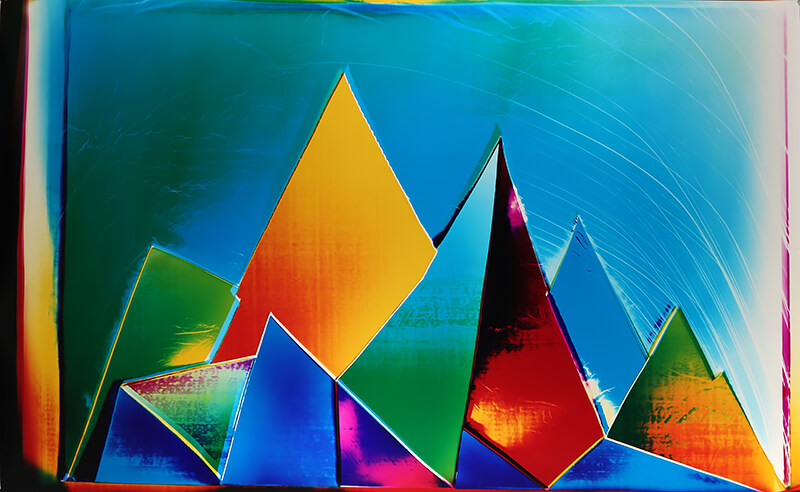
© Liz Nielsen Underwater Mountains, 2018 Analogue Chromogenic Photogram on Fujiflex Courtesy Black Box Projects
(Belgium, lives in Ghent) employs the silver gelatin printing process to create images that are subsequently worked on by hand. His practice is not constrained by the camera used, the film or technology of the camera used, and the paper the photographs are printed on. For him, the very act of developing and printing analogue photography offers endless ways to be artistically free. Instead of fussing over making the perfect silver gelatin print, for example, Roels believes that all printed versions of an image have value - he never shows just one perfect print, but all of them, in one composition. Some of his compositions consist of hundreds of variations of one single negative, all printed in the dark room.
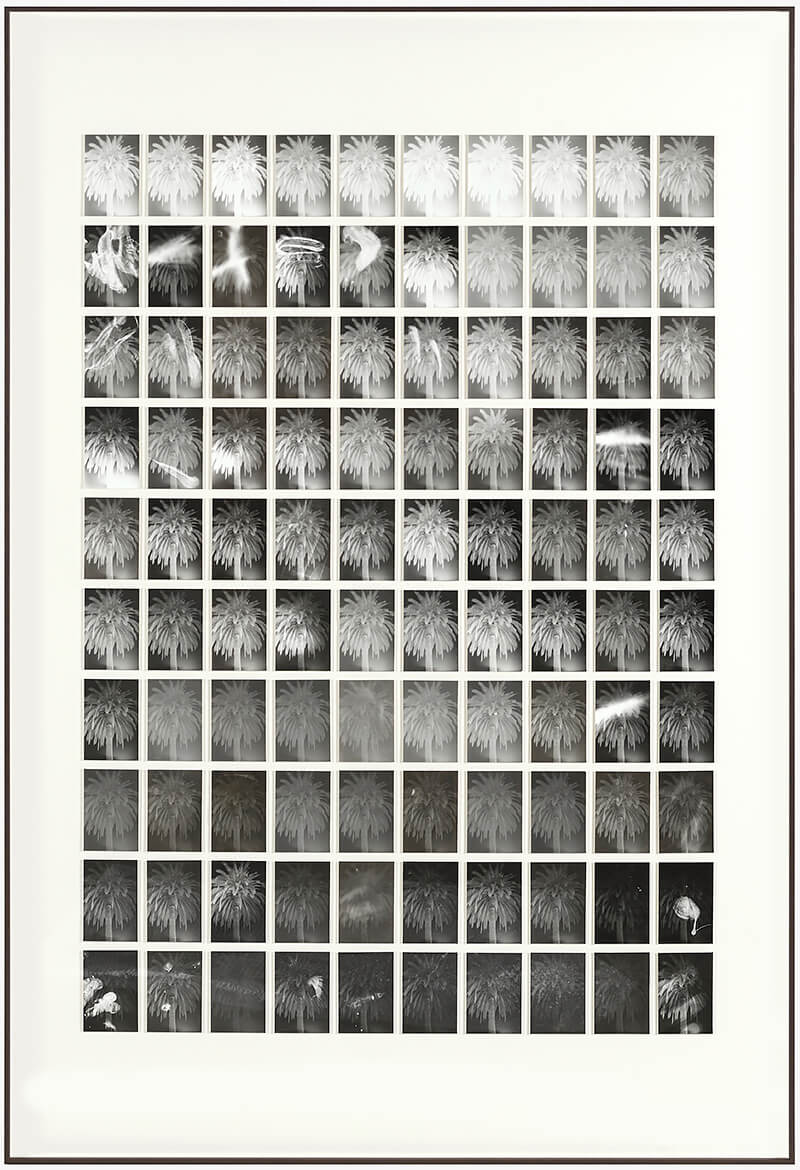
© Bruno V. Roels Breaking Promises, 2018 Graphite on overprinted gelatin silver paper Courtesy Black Box Projects in collaboration with Gallery Fifty One
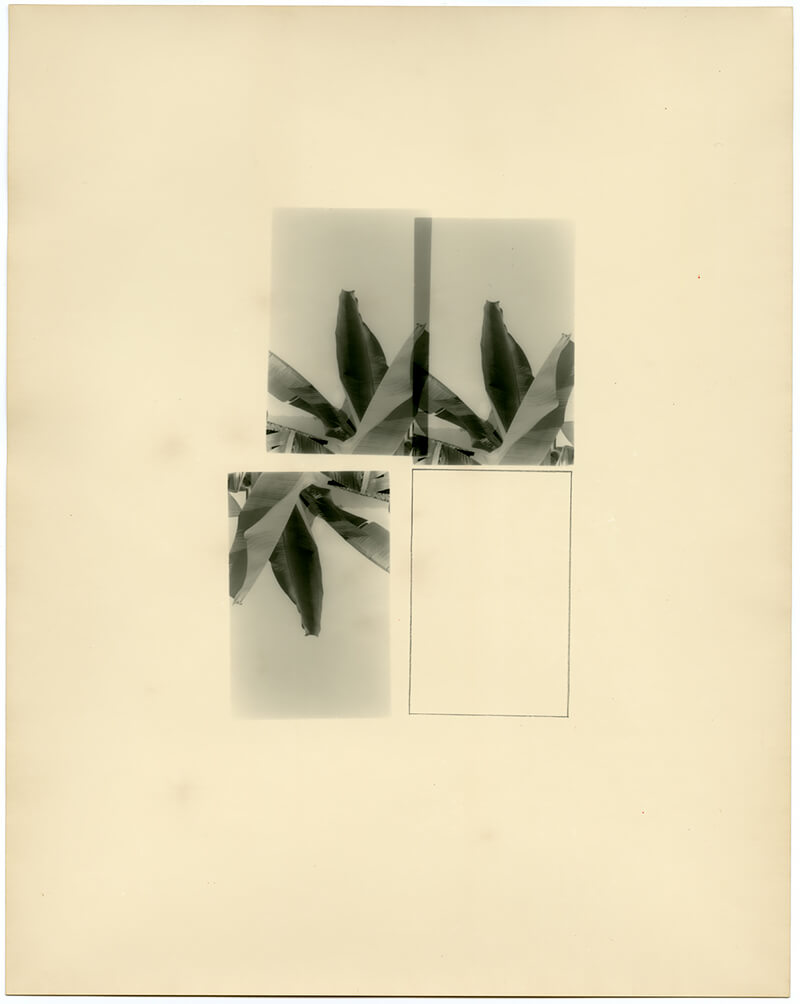
© Bruno V. Roels A Palm Tree Is A Palm Tree Is A Palm Tree (Night Giant), 2015 Composition of 100 fibre-based gelatin silver prints mounted on cardboard Courtesy Black Box Projects in collaboration with Gallery Fifty One
(USA , lives in New York ) uses both large-format film and early photographic processes to explore the present-day landscape to make environmental portraits. Her work centres on our relationship with water, contrasting some of the most desolate deserts in the American West with iconic surf beaches around the world that captures thirteen years of portraits of surfers in tintype. She works with a large-format camera and a wet -collodian process that must be prepared and developed in situ. The very nature of collodion is spontaneous and unpredictable. It is precisely this raw quality of the process that suits the subject matter, giving it a distinctive appearance and echoing important traditions of 19 th century anthropological photography.
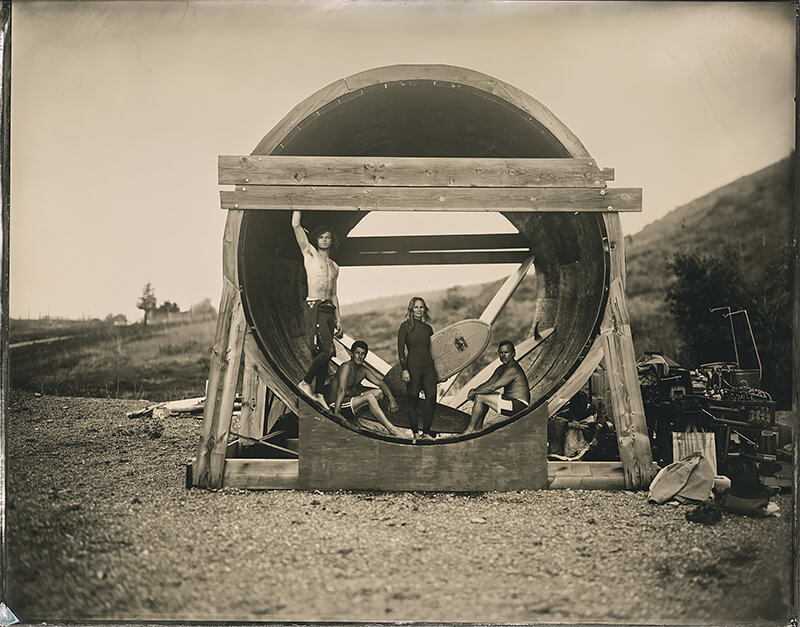
© Joni Sternbach In a Barrel 2017 Tintype Courtesy Black Box Projects
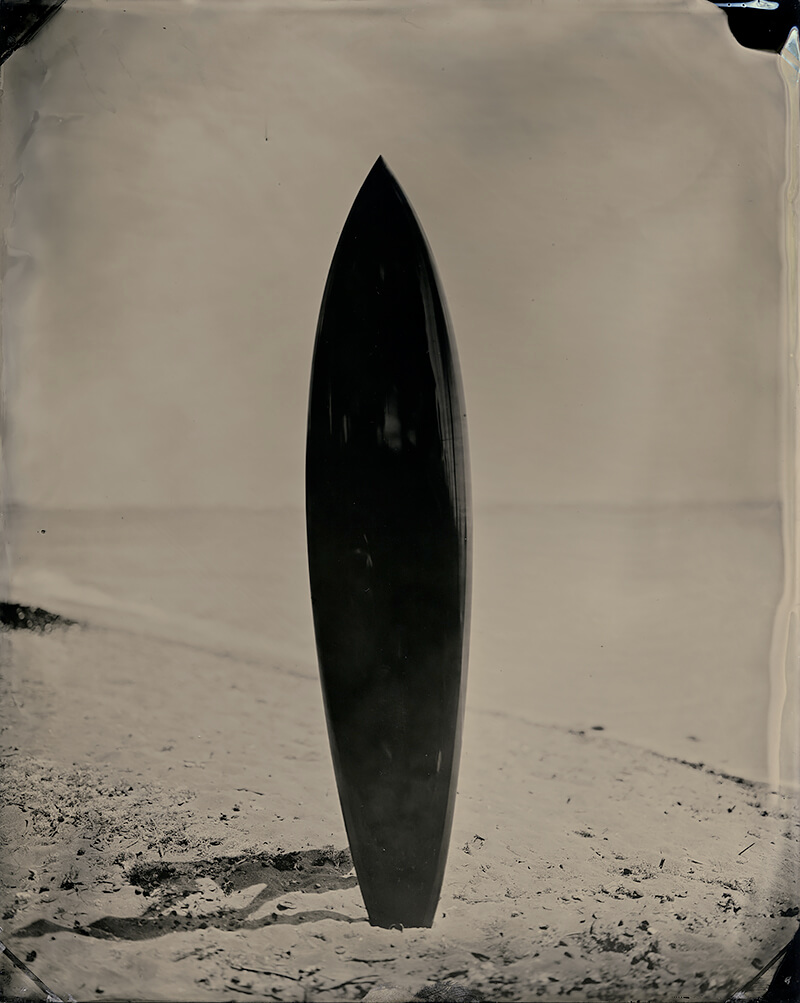
© Joni Sternbach Orange Lightning Bolt, 2018 Tintype Courtesy Black Box Projects
Black Box Projects specialises in contemporary photography and contemporary art that is created using photographic materials. Committed to working with artists who push the limits of traditional photographic practice, Black Box Projects does not keep a permanent space, instead arranging temporary project-based exhibitions in order to tailor the experience to the individual needs of the artist and the work exhibited. Black Box Projects aims to be a pioneer of the changing gallery model, as well as presenting a transparent working model with artists, clients and other gallerists that fosters community, creativity and collaboration.
